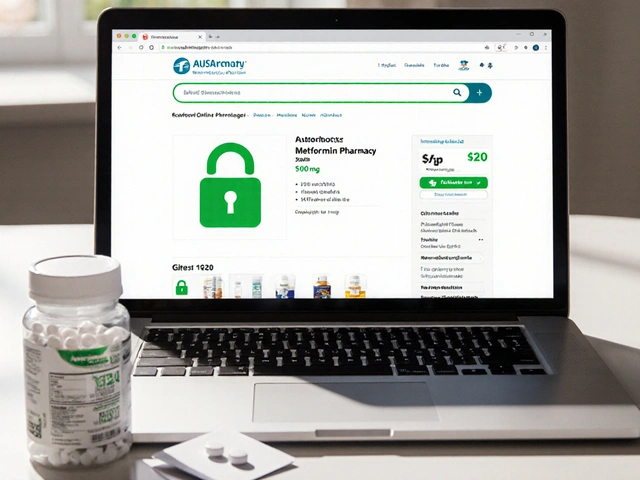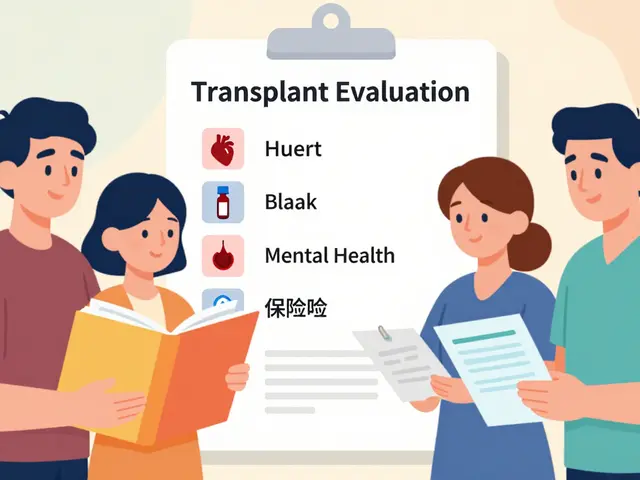
Birth Control Pill Comparison Tool
Find Your Best Birth Control Option
Select your top priorities to get a personalized recommendation:
Trying to decide whether Yasmin birth control is right for you? You’re not alone. Women across the UK compare active ingredients, side‑effects and lifestyle fit before picking a pill. This guide breaks down what makes Yasmin unique, lines it up against the most common alternatives, and helps you figure out which option matches your health goals.
Quick Take
- Yasmin combines 20µg ethinyl estradiol with 3mg drospirenone, offering strong acne control and a lower risk of water retention.
- Its VTE (blood‑clot) risk sits in the middle of combined pills - higher than low‑dose estradiol‑only options but lower than many third‑generation progestins.
- Alternatives like Alesse (levonorgestrel) favor weight stability, while Ortho Tri‑Cyclen (norgestimate) targets moderate acne.
- Switching is safe if you follow a 24‑hour overlap or start on the first day of your menstrual cycle.
- Talk to your GP or pharmacist about personal clot risk, migraine history, and any mood‑related concerns before deciding.
What Makes Yasmin Tick?
Yasmin is a combined oral contraceptive that blends two hormones:
- Ethinyl Estradiol - the synthetic estrogen component, present at 20µg. It stabilises the endometrial lining and suppresses ovulation.
- Drospirenone - a progestin derived from spironolactone, dosed at 3mg. It has anti‑androgenic properties (helps with acne) and a mild diuretic effect, reducing bloating.
The anti‑androgenic action of drospirenone is why many prescribe Yasmin for women battling hormonal acne or pre‑menstrual syndrome (PMS) symptoms. At the same time, the low estrogen dose aims to minimise classic estrogen‑related side‑effects such as nausea.
Efficacy and Safety Snapshot
When taken correctly, Yasmin is >99% effective at preventing pregnancy - comparable to most combined pills. Its safety profile is shaped by two factors:
- Estrogen dose: 20µg is considered low‑dose, which typically reduces the chance of headaches and breast tenderness.
- Progestin type: Drospirenone belongs to the fourth‑generation progestins. Studies from the British Medical Journal (2023) show a modest increase in venous thromboembolism (VTE) risk compared with second‑generation levonorgestrel pills, but a lower risk than third‑generation desogestrel formulations.
Key side‑effects to watch for include mood swings, occasional increased potassium levels (drospirenone can act like a mild potassium‑sparing diuretic), and the usual breakthrough bleeding during the first few cycles.

Head‑to‑Head: Yasmin vs Popular Alternatives
| Brand (Active Ingredients) | Estrogen (µg) | Progestin Type | Main Benefits | Typical Side‑Effect Profile | VTE Risk* (relative to levonorgestrel) |
|---|---|---|---|---|---|
| Yasmin | 20 | Drospirenone (4th‑gen) | Acne reduction, less bloating, PMS relief | Possible potassium rise, mild mood changes | 1.3‑1.5× |
| Alesse (Levonorgestrel) | 30 | Levonorgestrel (2nd‑gen) | Weight stability, low VTE risk | Spotting, breast tenderness | 1.0× (baseline) |
| Marvelon (Desogestrel) | 20 | Desogestrel (3rd‑gen) | Improved cycle regularity, moderate acne control | Increased VTE risk, possible weight gain | 1.6‑1.8× |
| Ortho Tri‑Cyclen (Norgestimate) | 35 | Norgestimate (3rd‑gen) | Balanced acne & cycle control, lower androgenic effect | Higher estrogen dose may cause nausea | 1.2‑1.4× |
| Qlaira (Estradiol Valerate) | 10‑20 (estradiol valerate) | Drospirenone (same as Yasmin) | Very low estrogen load, good for estrogen‑sensitive women | More breakthrough bleeding early on | ~1.2× |
*Relative risk compared to levonorgestrel‑based pills in a large cohort study (2022). All combined pills carry some VTE risk; personal medical history matters most.
Which Alternative Fits Your Lifestyle?
Not every pill works for every body. Below are common scenarios and the option that usually lines up best.
- Acne‑prone skin: Yasmin’s drospirenone and Marvelon’s desogestrel both curb androgen‑driven breakouts, but Yasmin usually yields faster results thanks to its stronger anti‑androgenic effect.
- Concern about blood clots: Alesse (levonorgestrel) has the lowest documented VTE risk. If you have a family history of clotting disorders, discuss a levonorgestrel‑based pill with your doctor.
- Weight stability or loss: Levonorgestrel and norgestimate (Ortho Tri‑Cyclen) tend to have neutral weight profiles. Some users report a slight weight dip with Yasmin due to reduced water retention.
- Heavy menstrual bleeding: Drospirenone‑based pills (Yasmin, Qlaira) often thin the endometrial lining, leading to lighter periods.
- High estrogen sensitivity (e.g., migraines with aura): Consider low‑dose estradiol valerate (Qlaira) or a progestin‑only pill, as estrogen can worsen migraine symptoms.
How to Switch Safely
Changing from Yasmin to another pill (or vice versa) is straightforward if you follow one of these two strategies:
- First‑day start: Begin the new pack on the first day of your period. Skip the placebo week of the old pack and start the fresh active pills immediately.
- 24‑hour overlap: If you’re mid‑cycle, take one active tablet of the new brand at the usual time, then take the next scheduled pill from the old pack 24 hours later. This double‑dose bridge keeps hormone levels steady.
During the transition, you might notice a brief spotting window - that’s normal. If spotting exceeds a week or you develop severe cramps, reach out to your pharmacist.
Things to Discuss with Your Healthcare Provider
- Personal or family history of VTE, stroke, or heart disease.
- Current medications - especially antibiotics, anticonvulsants, or herbal supplements that can lower pill effectiveness.
- Migraine type (with or without aura).
- Desire for acne control versus weight stability.
- Potential for potassium‑related issues if you already take diuretics.
Being upfront helps your prescriber match you with the pill that balances effectiveness, safety, and lifestyle preferences.

Frequently Asked Questions
Can I take Yasmin if I’m a smoker?
Smoking over age35 dramatically raises VTE risk with any combined pill, including Yasmin. Doctors usually recommend a progestin‑only method for older smokers.
Will Yasmin affect my mood?
A small percentage of users report mood swings or mild depression. Drospirenone’s slight progesterone‑like effect can influence neurotransmitters, so monitor how you feel during the first two cycles and speak up if symptoms persist.
Is there a risk of potassium buildup with Yasmin?
Drospirenone can modestly increase potassium levels, but clinically significant hyper‑kalemia is rare. If you’re on potassium‑sparing diuretics or have kidney disease, your GP will check blood work before prescribing.
How quickly does Yasmin improve acne?
Most women notice clearer skin within 6‑8weeks, though full benefits may take up to three months. Consistency is key - missing doses can blunt the anti‑androgenic effect.
Can I take Yasmin while on antibiotics?
Only a few antibiotics (rifampin, griseofulvin) meaningfully reduce pill efficacy. Common courses like amoxicillin or azithromycin are safe. Always double‑check with your pharmacist.




Keyla Garcia
September 28, 2025 AT 09:45OMG, this guide is like the holy grail for anyone tangled in the birth‑control maze 😱! Seriously, dropping a 20µg estrogen dose while slamming on drospirenone is basically the VIP lounge for acne‑prone queens. But let’s be real – the VTE numbers? They’re not exactly a walk in the park, and anyone who thinks otherwise is living in la‑la land 😂. If you’re scared of bloating, Yasmin is a godsend, but if you’ve got a family history of clots, maybe steer clear. The table is crystal clear – Alesse scores a 1‑point on the safety scale, while Yasmin flaunts that anti‑androgenic glow. Bottom line: pick your poison based on your skin, weight, and clot anxiety, and don’t forget to chat with your GP before you leap 🚀.
Harshal Sanghavi
September 29, 2025 AT 02:25Look, the comparison chart does a decent job, but if you’re still stuck, think about what matters most to you. If acne is your #1 problem, Yasmin’s drospirenone really does the trick – just don’t ignore the slightly higher clot risk. On the other hand, Alesse is the safe bet for weight‑watchers and those worried about VTE. Remember, no pill is a silver bullet; lifestyle and genetics play huge roles. Stick to the plan, set reminders, and you’ll be fine.
Duke Gavrilovic
September 29, 2025 AT 19:05From a clinical perspective, the synthesis of data presented here aligns with current NICE guidelines. The delineation of estrogen dosage versus progestin generation provides a clear framework for risk stratification. Notably, the relative VTE risk, expressed as a multiplier, offers a quantifiable metric for shared decision‑making. It is also prudent to consider individual comorbidities, such as migraines with aura, which may contraindicate combined oral contraceptives. In summary, the table serves as a pragmatic tool for clinicians and patients alike.
Abby VanSickle
September 30, 2025 AT 11:45I appreciate the thoroughness of the guide; it really helps demystify a complex topic. For anyone feeling overwhelmed, focus on the aspects that affect your daily life the most – whether that’s acne, weight fluctuations, or menstrual flow. While Yasmin’s anti‑androgenic properties can be a boon for skin, the modest increase in VTE risk should not be dismissed, especially for smokers or those with a clotting history. Open dialogue with your healthcare provider is essential to weigh these factors appropriately. Above all, remember that your comfort and confidence matter most.
chris macdaddy
October 1, 2025 AT 04:25hey folks, so i looked at the chart and i think the biggest thing is just staying consistent. missing pills messes up the whole anti‑androgen effect yasmin promises. also, a tiny typo but i noticed some folks think drospirenone raises potassium a lot – it’s usually not a problem unless you’re on diuretics. if ur worried about weight, levonorgestrel pills like alessee are pretty chill. just keep an eye on any weird mood swings and let your doc know.
Moumita Bhaumik
October 1, 2025 AT 21:05Don’t be fooled by the “scientific” tables – they’re part of the pharma’s agenda to push you into a specific pill while downplaying hidden risks. The VTE numbers are just the tip of the iceberg; what about the long‑term hormone disruption and its impact on fertility? And that “potassium rise” warning? It’s a gateway to controlling your diet and prescribing expensive blood tests. Trust your gut, question the mainstream narrative, and consider non‑hormonal options.
Sheila Hood
October 2, 2025 AT 13:45Yasmin works for acne, but it’s not magical.
Melissa Jansson
October 3, 2025 AT 06:25Let’s dissect the jargon here – the term “fourth‑generation progestin” is nothing more than marketing fluff designed to differentiate drospirenone from the older levonorgestrel class. While the anti‑androgenic claim sounds appealing, the empirical data suggest only a marginal benefit over third‑generation counterparts. Moreover, the risk multiplier for VTE, albeit modest, should not be trivialized. In essence, the decision matrix is a classic case of cost‑benefit analysis, where the perceived dermatological advantage must outweigh the probabilistic clot hazard.
Max Rogers
October 3, 2025 AT 23:05Great breakdown! Just a reminder to double‑check any drug interactions, especially with antibiotics or anticonvulsants that can reduce efficacy. Also, if you experience persistent spotting, it might be worth switching after a few cycles – many find a smoother cycle with a different progestin. Stay consistent and keep a symptom journal; it helps your provider fine‑tune the prescription.
Deborah Escobedo
October 4, 2025 AT 15:45Thanks for the tip about journaling – it’s amazing how much you can learn about your body when you track patterns. I’ve found that even small lifestyle tweaks, like staying hydrated, can lessen bloating on combined pills. Keep the optimism flowing!
Alex EL Shaar
October 5, 2025 AT 08:25Alright, let’s get into the nitty‑gritty of this whole contraceptive saga. First off, the table you pasted looks slick, but numbers don’t lie – the VTE multiplier for Yasmin hovers around 1.4, which is a red flag for anyone with a family clot history. Second, the anti‑androgenic hype is overblown; drospirenone’s similarity to spironolactone is a double‑edged sword, offering acne relief but also a potassium‑sparing effect that can meddle with cardiac function if you’re on diuretics. Third, the weight conversation is a myth perpetuated by marketing teams; the diuretic effect merely masks fluid retention, not actual fat loss. Fourth, the “low‑dose estrogen” claim is a smokescreen – 20µg is still enough to trigger estrogen‑related side effects in sensitive individuals, especially migraineurs with aura. Fifth, the recommendation to start on day one or use a 24‑hour overlap is practical, but fail to mention the potential for breakthrough bleeding during the transition, which can be misinterpreted as hormonal failure. Sixth, the guide glosses over the impact of smoking over 35, a classic risk multiplier that can push VTE risk to dangerous levels. Seventh, the mention of “mood swings” is vague; we need to differentiate between transient hormonal mood fluctuations and clinically significant depression, which some studies have linked to drospirenone’s progesterone‑like activity. Eighth, the FAQ section neglects to address the rare but serious issue of hyper‑kalemia in patients with renal insufficiency – a detail that could save lives. Ninth, the table’s VTE risk percentages lack absolute risk numbers, leaving readers clueless about the actual probability of a clot. Tenth, the recommendation to “talk to your GP” is noble but under‑emphasized; shared decision‑making should be the cornerstone of contraceptive choice, not a footnote. Eleventh, the guide doesn’t dive into the pharmacokinetics – the half‑life of drospirenone means a delayed clearance, which is relevant for drug interactions. Twelfth, the omission of newer progestin‑only options, like the POP or IUS, is a glaring oversight in a supposedly comprehensive comparison. Thirteenth, the advice to avoid certain antibiotics is sound, yet the list is incomplete – rifampin isn’t the only enzyme inducer out there. Fourteenth, the language oscillates between clinical and layperson, making it hard to gauge the target audience. Finally, the entire piece could benefit from a clear flowchart that guides users based on their top three priorities, rather than a static table that forces a one‑size‑fits‑all approach. In short, the guide is a decent starting point, but it’s riddled with gaps that could mislead an uninformed reader. Proceed with caution and demand a personalized evaluation from your healthcare provider.
Stephen Davis
October 6, 2025 AT 01:05Wow, that was a marathon of insight! I love how you broke down each blind spot and offered practical tweaks. Adding a flowchart would indeed make the decision process more user‑friendly. I’ll pass this along to my health‑coach community – it’s exactly the level of depth we need.